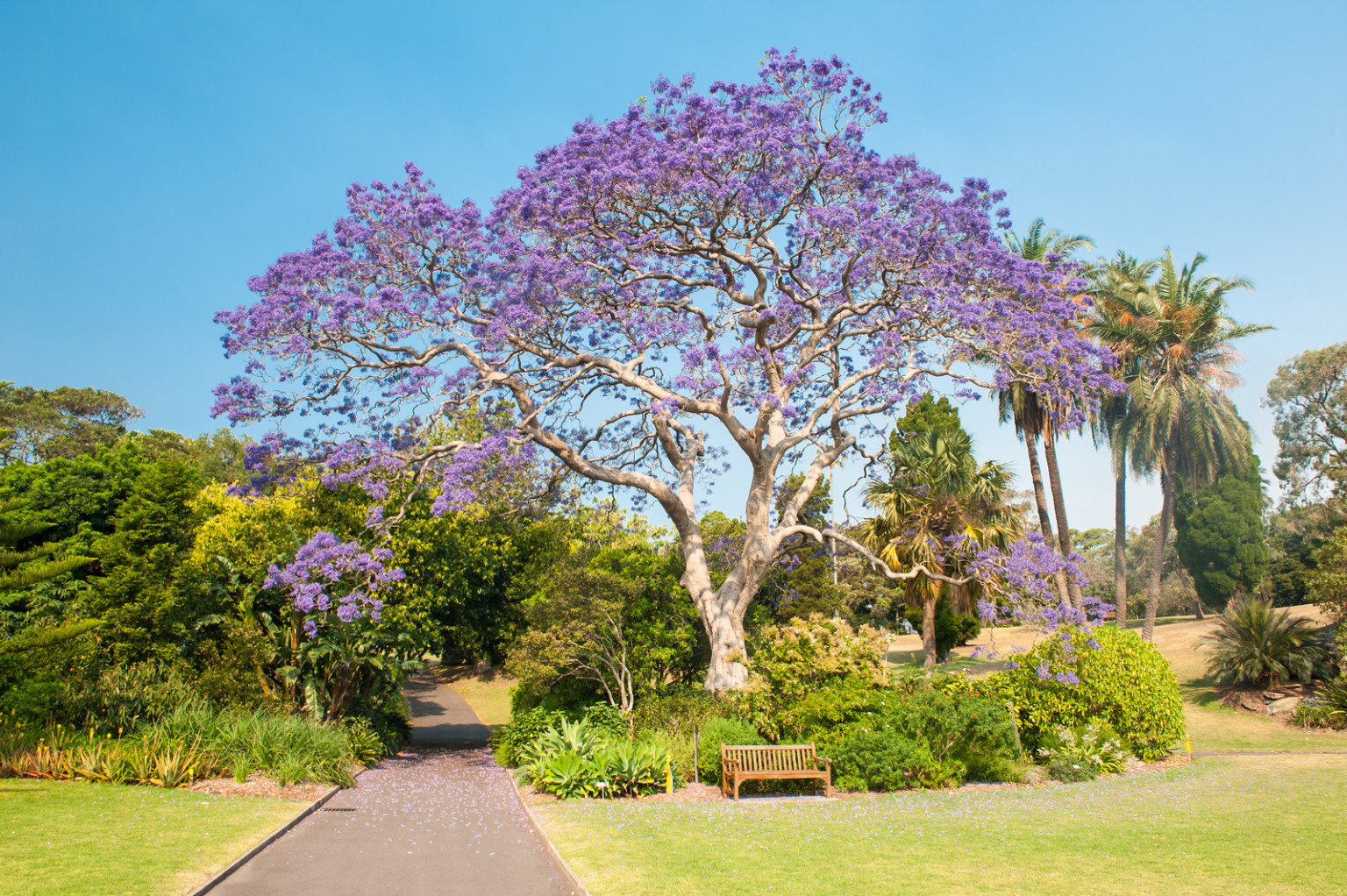

Plant the tree in an open spot with sandy soil and full sun. An afternoon with a rake will do the trick, but this is the reason so many jacarandas are planted as street trees, allowing most of the spent blooms to fall on the street instead of in the yard.

One piece of jacaranda tree information that many nurseries and catalogs don’t share is that when the flowers drop, they cover the ground in a thick layer and must be raked up before they decompose into slime.
#PURPLE TREE JACARANDA HOW TO#
How to Plant and Care for a Jacaranda TreeĬhoose the spot for your tree wisely. The spreading branches may fill your entire front yard. They grow relatively fast and will get up to 60 feet tall (18 m.) and just as wide. They prefer a sandy soil with great drainage, and show off their lavender blooms best when planted in full sun. (-9 C.), and they do best above the freezing point. Jacaranda tree hardiness is tested when the temperature drops below 15 degrees F.

Jacarandas are true southern trees, thriving in USDA plant hardiness zones 9b through 11. Gardeners living further north often have success growing jacaranda as a large houseplant and they have been known to make spectacular bonsai specimens. Growing jacaranda trees is mostly a matter of having the right environment, as they’re strictly southern trees that thrive in Florida and parts of Texas and California. Read on to learn how to grow a jacaranda tree if you have the right environment. This lovely tree often spans the width of a front yard, and is covered in beautiful lavender purple blooms every spring. The first time someone sees a jacaranda tree ( Jacaranda mimosifolia), they may think they’ve spied something out of a fairy tale.


 0 kommentar(er)
0 kommentar(er)
